The Canon EOS R7 and Canon EOS R10 are both APS-C mirrorless cameras that may look alike from afar, but they belong to entirely different price brackets.
The EOS R7 is priced at $1499 / £1349 / AU$2349, while the R10 is more affordable at $979 / £899 / AU$1499 (both for the body only). Essentially, the R7 costs 1.5 times more than the R10.
In the context of rising camera prices, neither model is exorbitantly priced. Both are RF-mount successors to the Canon EOS M6 Mark II and the iconic EOS 7D, featuring contemporary updates lacking in older versions, especially the latest autofocus technology from Canon.
Is the EOS R7 worth its higher price? For many photographers, the answer is yes. The difference in image quality may not be groundbreaking for typical scenarios, and both cameras boast impressive burst rates. However, the EOS R7 offers in-body image stabilization (IBIS), 4K/60p video without cropping, a Log image profile, and superior battery life, among other advanced features. More details can be found in our extensive Canon EOS R7 review.
On the other hand, the Canon EOS R10 might be the better option for anyone looking for a smaller, lighter camera or, importantly, those on a budget who don’t require advanced features. Our early assessment in the Canon EOS R10 review concludes that it certainly exceeds expectations for its price range.
Here’s a detailed comparison of both models in essential areas to help you determine which mirrorless camera suits you best.
Canon EOS R7 vs Canon EOS R10: Design
- The EOS R10 is more compact but less durable
The designs of the Canon EOS R7 and EOS R10 fall into recognizable categories. The EOS R10 is a fairly lightweight APS-C camera.
In contrast, the Canon EOS R7 is bulkier and more substantial, which helps it balance better with larger lenses. The weight difference is particularly notable. The EOS R7 weighs 612g with a battery and SD card, significantly heavier than the 429g of the EOS R10.
In terms of dimensions, the difference is less pronounced at 132 x 90.4 x 91.7mm for the R7 and 122.5 x 87.8 x 83.4mm for the R10. However, holding both reveals a clear distinction in size.
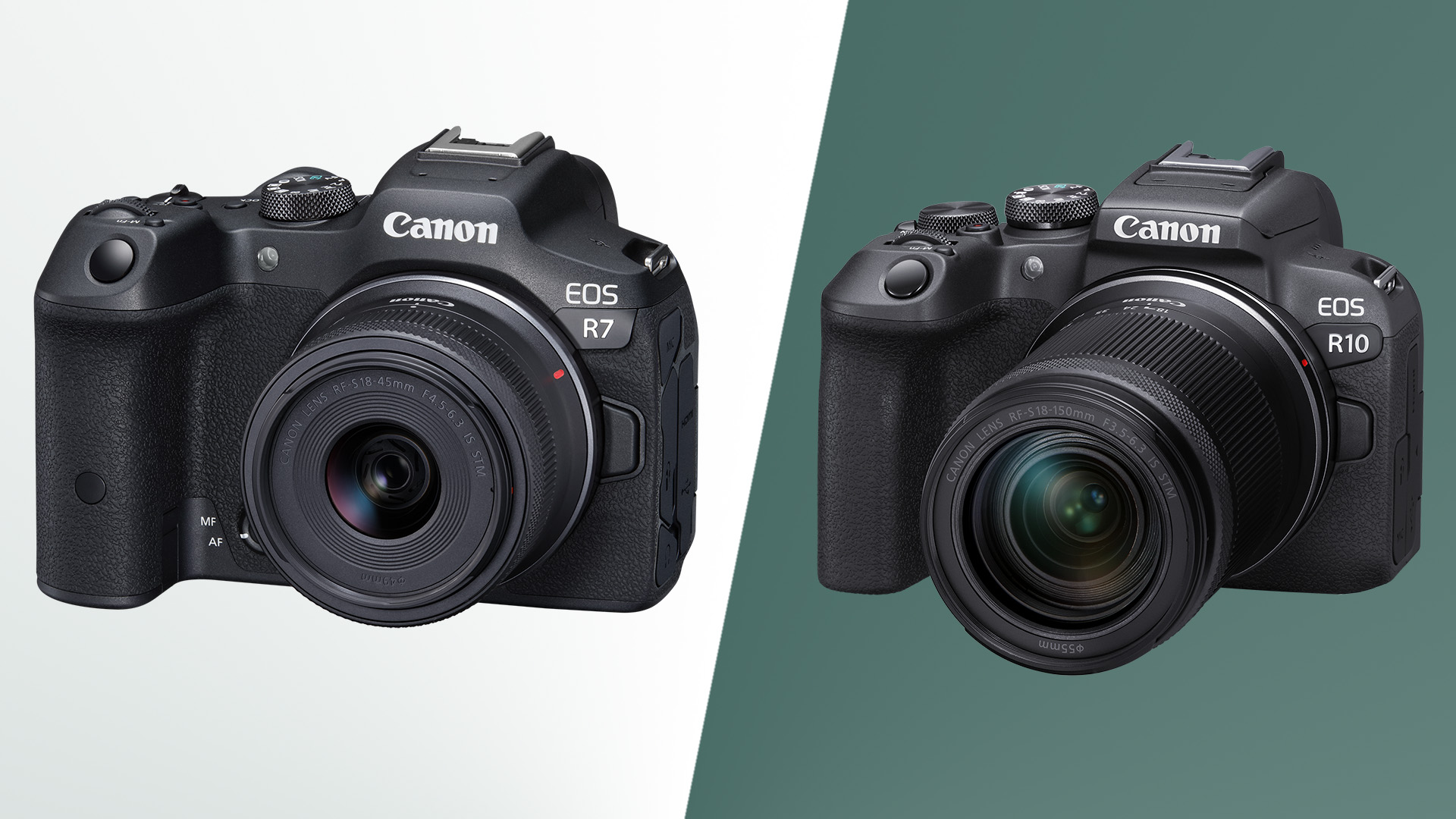
If you need a lightweight camera ideal for street photography with a pancake lens, the EOS R10 is probably the better choice.
Additionally, the Canon EOS R7 offers superior weatherproofing compared to the EOS R10, akin to the Canon EOS 90D. While we don’t have exact specs to confirm the water resistance levels, Canon claims that the R7’s design provides enhanced protection against water and dust.
This distinction is a classic marker of the difference between lower and higher-end models. However, it’s worth noting that both cameras feature a magnesium alloy shell and some level of weather resistance.
The camera controls also differ slightly. The Canon EOS R7 features a dial on the back near the viewfinder instead of on top, and the power switch includes a third position for direct access to video mode.
Canon EOS R7 vs Canon EOS R10: Sensor
- The EOS R7 boasts a higher pixel count and more focus points
Both cameras utilize APS-C sensors. Their low-light performance may not rival that of full-frame models, but APS-C sensors are still quite adaptable. The Canon EOS R7 features a higher-resolution sensor at 32.5MP, compared to the R10’s 25.5MP.
This increase in resolution makes the EOS R7 more suitable for cropping images and producing larger prints. However, the difference isn’t as immense as it is in other brands, like Sony’s A7 series, where resolutions range from 12MP to 61MP.
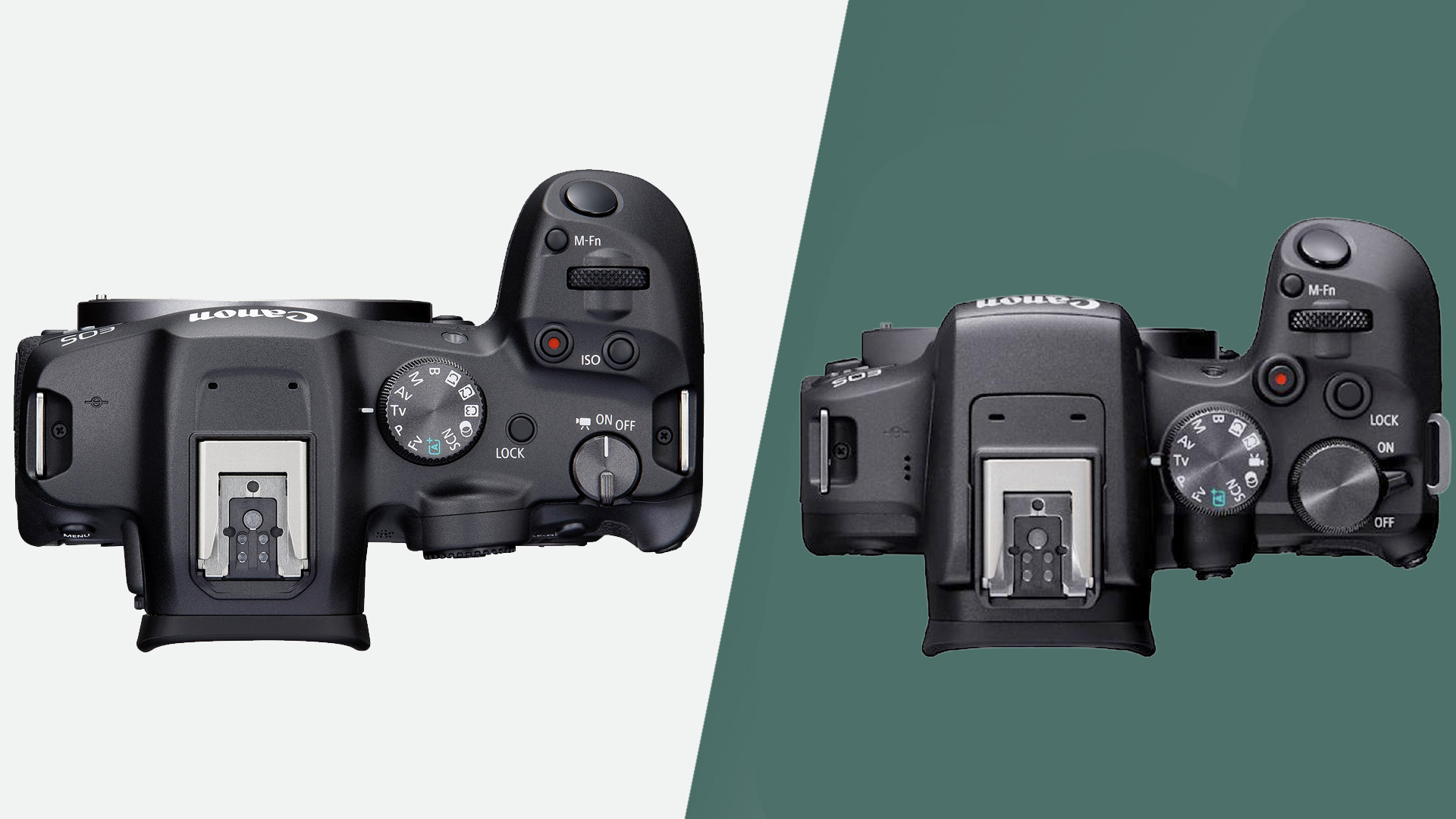
The higher resolution of the R7 also leads to a greater number of focus points. Both cameras feature phase-detection autofocus (PDAF) technology integrated into the sensor. The EOS R7 offers up to 5,915 selectable focus points, while the R10 has 4,503.
However, this variation doesn’t significantly impact usability. Both models utilize the same Dual Pixel CMOS AF II focusing system, and each comes equipped with 651 points for autofocus purposes.
Canon EOS R7 vs Canon EOS R10: Performance
- The Canon EOS R7 excels in burst shooting
The EOS R7 outperforms the R10 when it comes to burst shooting. Both cameras can shoot at 15fps with the mechanical shutter, but their performance diverges with the electronic shutter. The R7 can achieve 30fps, while the R10 reaches up to 23fps.
While the slower mechanical shutter speed satisfies most users, the potential burst speed of the EOS R7 is particularly beneficial for action and sports photography. This capability enhances the credibility of this premium model, placing it on par with high-end mirrorless options like the Sony A1 in terms of speed.
Moreover, the Canon EOS R7 features a more substantial burst buffer compared to the R10 in most scenarios. At 30fps, it can capture up to 42 raw files (126 JPEG) before needing to clear the buffer, while the R10 can manage 21 raw frames (70 JPEG) at 23fps—double the R10’s capacity.
| Row 0 – Cell 0 | Max burst speed (mechanical shutter) | Buffer (mechanical shutter) | Max burst speed (electronic shutter) | Buffer (electronic shutter) |
| Canon EOS R7 | 15fps | 224 JPEG / 51 raw images | 30fps | 126 JPEG / 42 raw images |
| Canon EOS R10 | 15fps | 460 JPEG / 29 raw images | 23fps | 70 JPEG / 21 raw images |
Shooting at 15fps complicates things slightly. The raw burst performance is notably better in the EOS R7, with a buffer that can accommodate 51 shots compared to the EOS R10’s 29.
However, when it comes to JPEGs, the more budget-friendly EOS R10 excels, capable of handling 460 frames before needing to slow down, compared to the R7’s 224 frames.
This indicates that the Canon EOS R10 finds a balance at 15fps where its buffer clearance aligns well with the data rate. The camera’s lower resolution plays a role here, yet even at 15fps, the EOS R7 can still shoot continuously for about 15 seconds before the buffer fills up, providing ample time for most shooting situations.
Canon EOS R7 vs Canon EOS R10: features
- The Canon EOS R7 offers slightly more versatility and features In-Body Image Stabilization (IBIS)
Although both cameras share the same processor, the Canon EOS R7 performs a bit faster in certain aspects, including the minimal exposure time.
The fastest shutter speed for the EOS R7 using the mechanical shutter is 1/8000, versus 1/4000 for the EOS R10. Both models are capable of reaching 1/16000 of a second with the electronic shutter, but the faster mechanical shutter speed caters to action photographers.
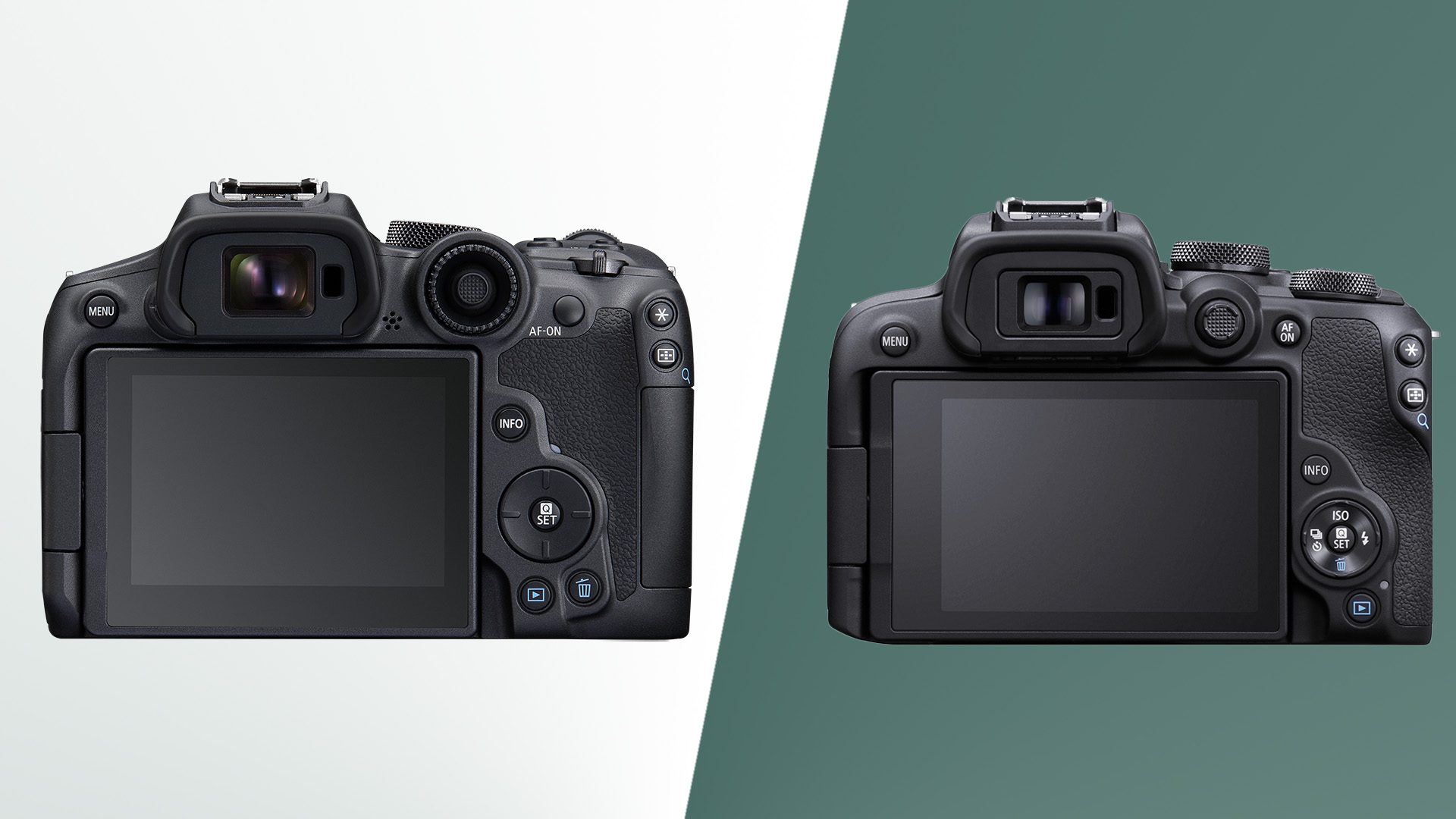
In-body image stabilization (IBIS) in the EOS R7 is a significant advantage, especially for handheld night photography, as it works well even with lenses lacking their own stabilization. The results improve, whether using stabilized lenses or not, thanks to Canon’s “collaborative” IBIS, which works alongside lens stabilization.
Canon EOS R7 vs Canon EOS R10: display and EVF
- The EOS R7 features a superior screen and EVF
At first glance, the rear screen and EVF of both the EOS R7 and R10 appear similar. They each come with fully articulated 2.95-inch rear displays that refresh at rates up to 120Hz. Their EVFs offer a resolution of 2.39 million dots, equivalent to 1024 x 768 pixels.
While both models present good value, there are some key differences.
The rear display on the EOS R7 boasts a higher resolution than that of the R10, with 1.62 million dots versus 1.04 million dots. In terms of pixel count, that’s 900 x 600 pixels compared to 720 x 480 pixels.
Additionally, the EVF magnification is greater in the EOS R7, making the viewfinder image appear larger, which enhances clarity and facilitates composition.
Canon EOS R7 vs Canon EOS R10: video
- The EOS R7 is equipped with superior “pro” video capabilities
Both cameras deliver an engaging video experience, including 4K recording at 60 frames per second, and 120fps in Full HD, alongside optional in-camera 10-bit 4:2:2 color capture. However, the EOS R7 has distinct advantages.
A major difference is that the EOS R7 can record 4K at 60p without cropping the image, while the R10 requires a significant 64% crop to achieve the same frame rate.
This discrepancy arises, despite both cameras housing the Canon DIGIC X sensor, primarily due to the processing demands. The reduced native resolution of the EOS R7 allows for easier processing, approaching 4K and requiring less from the processor.
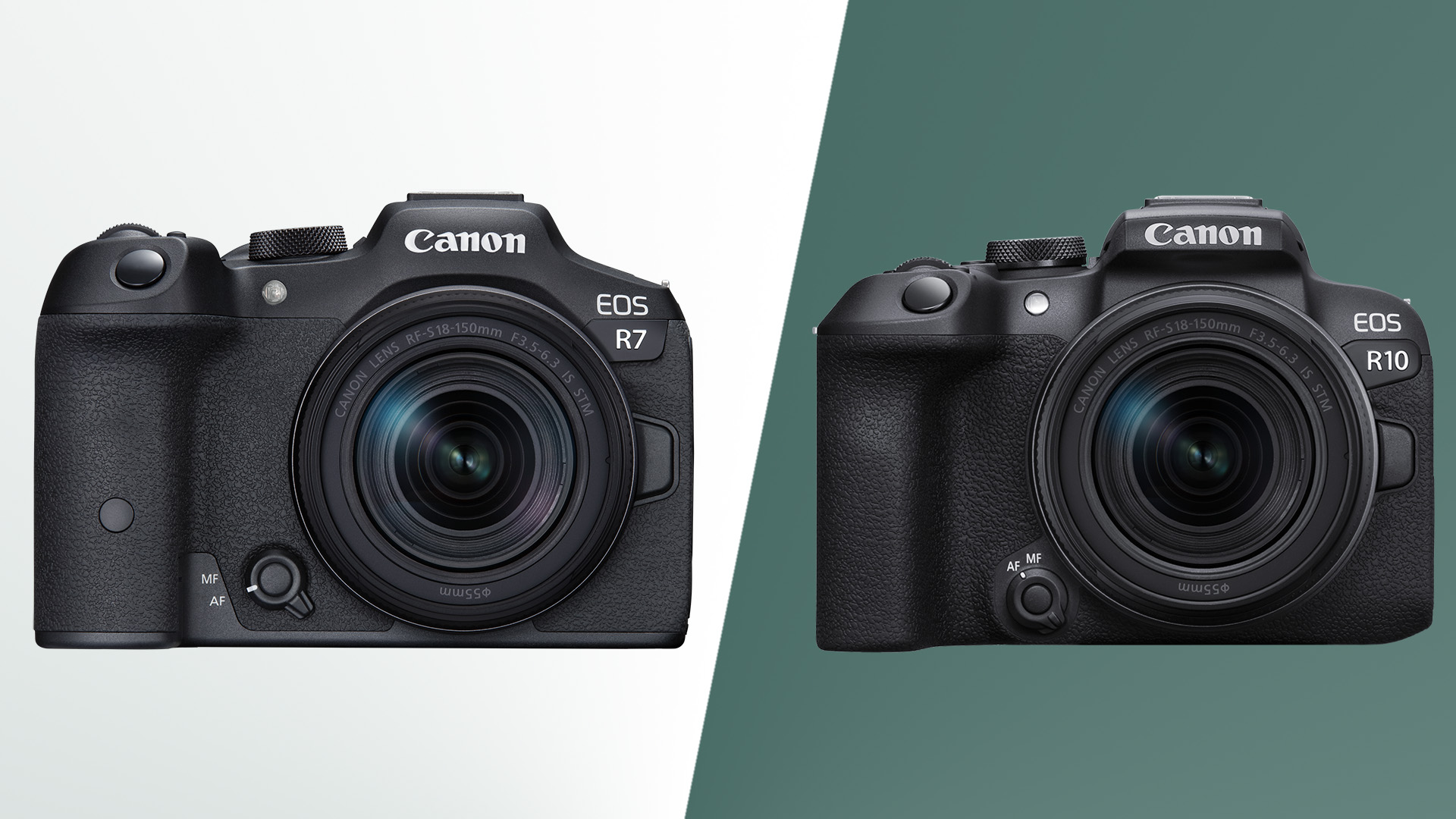
For the highest image quality, it’s recommended to use the 4K “fine” mode for both cameras. This setting limits each camera to 30fps but utilizes all relevant sensor pixels for creating the final image.
‘Supersampling’ or ‘oversampling’.
The abundance of pixels allows the camera to smooth hard edges and diagonals effectively without sacrificing detail.
Canon’s EOS R7 features a Log mode, Canon Log 3, which the EOS R10 lacks. This is a classic ‘flat’ shooting style aimed at preserving the highest dynamic range, ideal for those wishing to color grade their footage after capture.
This aspect is crucial to the EOS R7’s identity as a serious camera for hobbyists, capable of adapting to multiple photography types, including street and action photography, as well as video shoots.
Canon EOS R7 vs Canon EOS R10: Storage
- The EOS R10 has a slower USB connection and only one SD card slot
These cameras aren’t exactly high-end enough to require a CFexpress card slot, and indeed, they don’t support either Type-A or Type-B CFexpress standards. However, they can utilize SD cards up to the UHS-II speed class.
The Canon EOS R7 boasts two card slots, whereas the EOS R10 has just one. Neither mode seems to demand dual cards, as a fast single SD card suffices, providing the ability to capture more stills and video without storage concerns.
You’ll find less need to remove a card for file transfers, as the Canon EOS R7 features a speedy USB 3.2 Gen 2 interface. This allows for theoretical data transfer rates of up to 10 Gbit/s, which equals 1250 MB per second.
In contrast, the Canon EOS R10 is equipped with a USB 2.0 interface, limited to 480 Mbit/s or 60 MB/s. If you purchase a super-fast memory card for this camera, you won’t achieve its maximum transfer speeds when sending images via cable.
Canon EOS R7 vs Canon EOS R10: Battery Life
- They use different batteries, with the EOS R7’s having double the capacity
The Canon EOS R10 utilizes the 1,040 mAh LP-E17 battery, which is compatible with cameras like the EOS RP and EOS M6 Mark II. In contrast, the Canon EOS R7 features the larger, more costly, and higher-capacity 2,130 mAh LP-E6NH.
This means the EOS R7 has more than double the capacity, resulting in nearly double the frames per charge. It’s CIPA-rated for 770 shots using the LCD or 500 shots with the viewfinder. This is significantly better than the 430 and 260 shots offered by the EOS R10, which may feel somewhat limiting.
It’s worth noting that the LP-E6NH wouldn’t fit the Canon EOS R10 as it’s larger and nearly twice the weight of the LP-E17.
Verdict
The Canon EOS R7 and EOS R10 share many similarities, yet their differences indicate they cater to distinct audiences. The Canon EOS R10 is an accessible, high-quality camera for those looking to elevate their photography beyond a smartphone or an older compact camera. It serves as a friendly introduction to the RF lens mount system.
Its 4K/60p video keeps it relevant, it’s not too heavy, burst shooting at up to 23 fps is impressive, and the 25.5 MP resolution is adequate for relatively large prints.
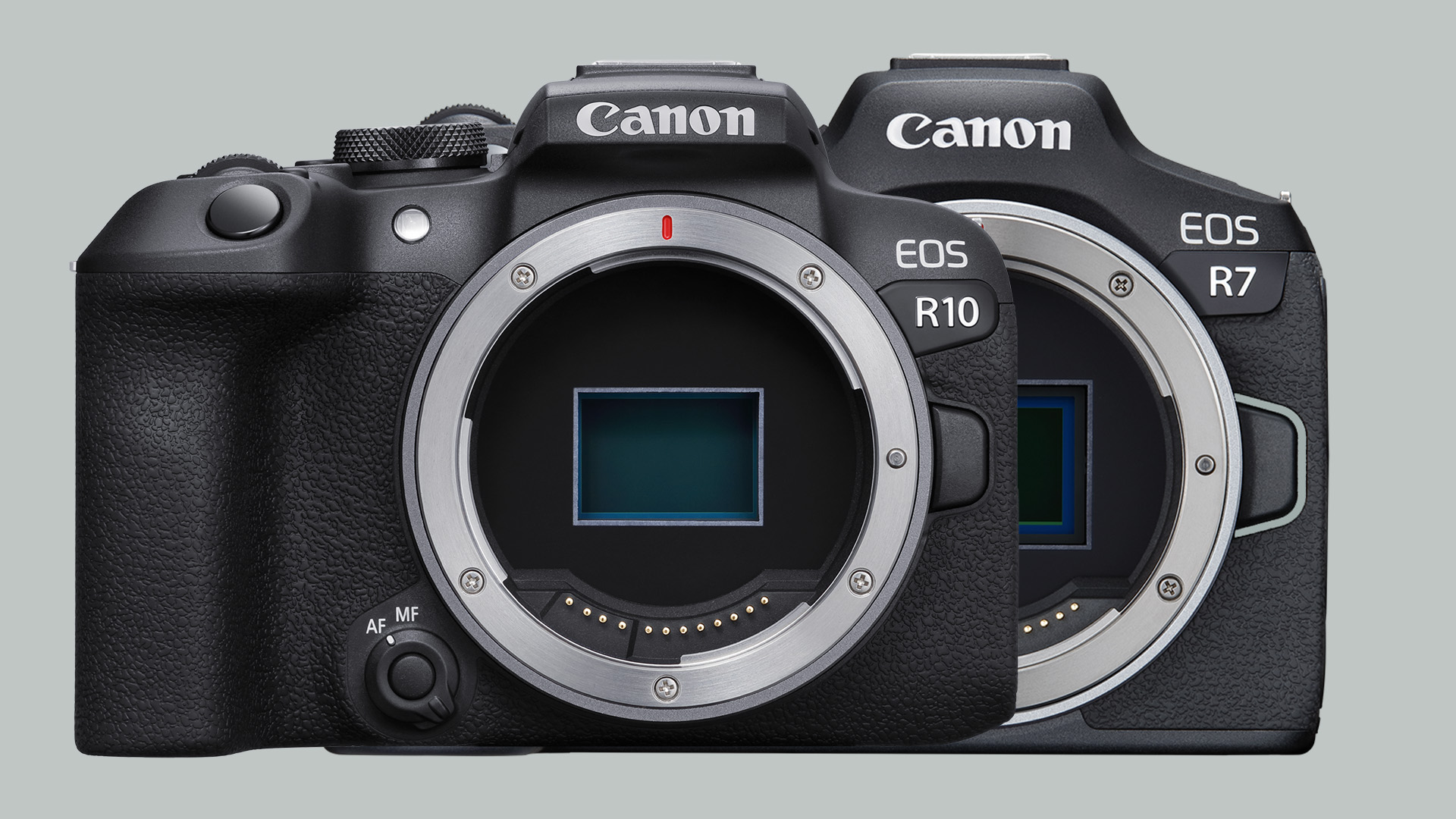
On the other hand, the Canon EOS R7 provides significant upgrades in nearly every aspect. While the IBIS system may add some weight, it offers a major advantage for users shooting handheld with compact non-IS lenses. It records 4K video at 60 frames per second without cropping, includes a professional-style Log mode, and its battery life is nearly double that of the Canon EOS R10.
While the EOS R7 may not be intended for professionals demanding the enhanced dynamic range and low-light capabilities of a full-frame sensor, it clearly suits the needs of dedicated hobbyists perfectly.


